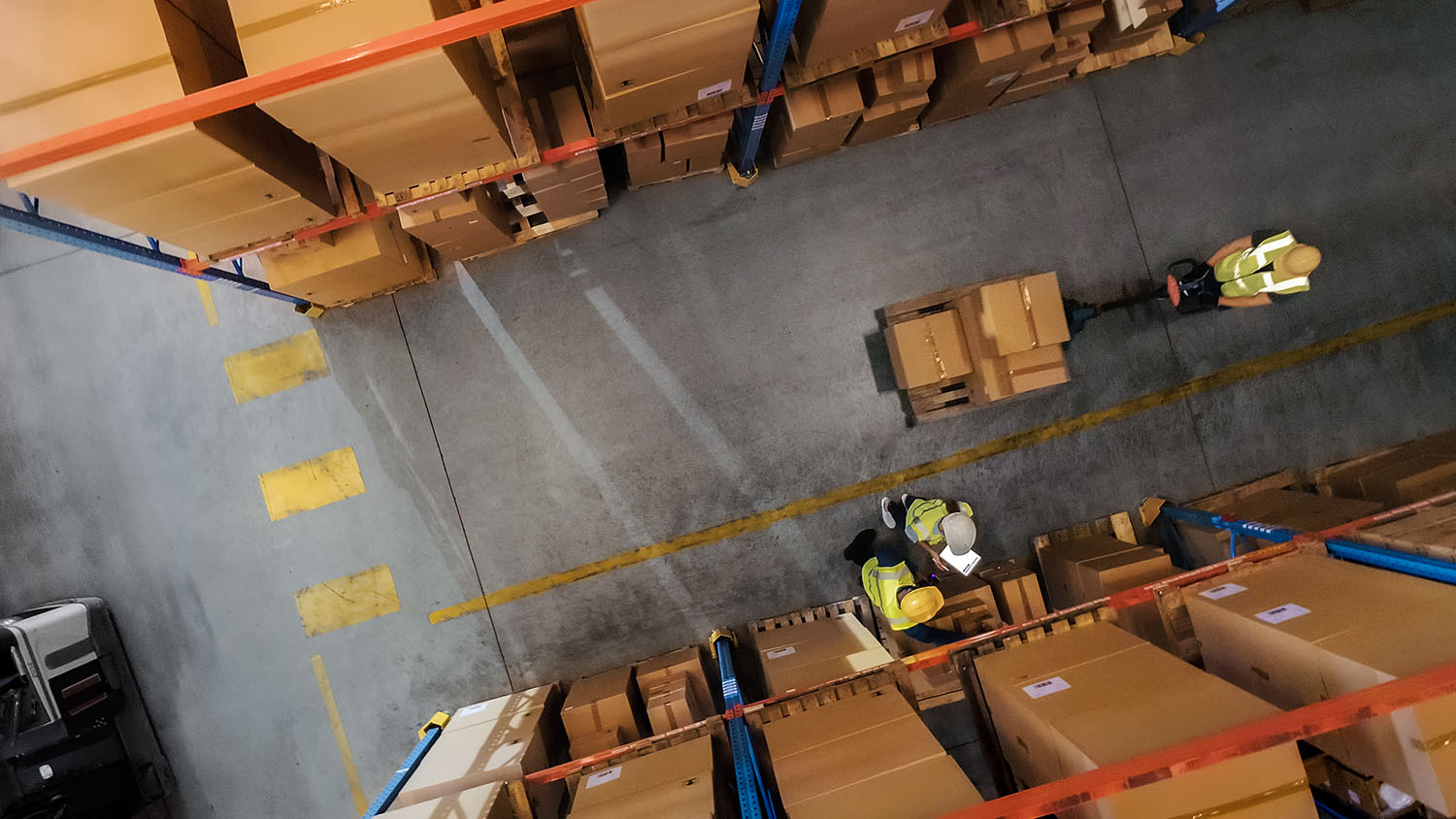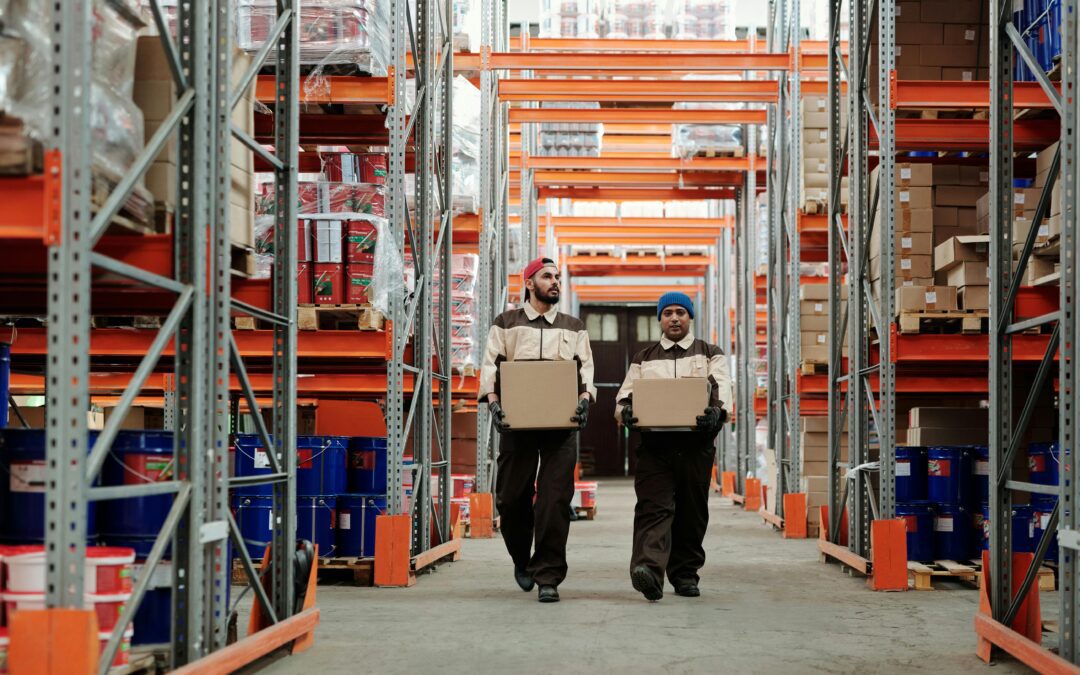A labor management system in a warehouse tracks employee activity and uses smart algorithms to help you allocate labor tasks more efficiently, especially during peak seasons.
According to an online survey, managing costs (49%) and operational efficiency (37%) remain the biggest challenges for 3PL warehouses. Fluctuations in the labor market, increased customer demands, and growing competitiveness are prompting warehouse operators across the country to push for greater productivity and efficiency.
Being competitive and adapting to industry demands is critical to surviving and flourishing as a business. That’s why many businesses are turning towards labor management systems (LMS) to help them optimize and streamline their warehouse operations and improve their bottom line.
What is a Labor Management System (LMS)?
A Labor management system (LMS) allows warehouses to manage the productivity of their labor and forecast resource allocation. The software tracks the activity and allocation of labor resources to give you real-time performance data, such as throughput, activity metrics, and downtime.
For example, during slower periods, the system can allocate fewer resources to non-essential tasks, such as inventory checks or organizing storage areas. This ensures that the workforce is used where it’s needed most, like handling incoming shipments or urgent orders. By identifying inefficiencies such as time-consuming processes or underutilized staff, the LMS helps improve operations, resulting in increased warehouse productivity and profitability.
How Does a Labor Management System Work In Your Warehouse?
An LMS complements your warehouse management system, as it unifies your order lifecycle with the time and capacity spent on completing that order. This gives you a full-picture view of everything happening in your warehouse and allows you to assign the resources at your disposal effectively.
The system works by recording task performances in real time and then comparing these to the estimated times you have assigned for each task. The standards or benchmarks of task timing and allocation allow you to see where to make improvements and how to allocate labor better to meet throughput and revenue goals.
For example, imagine a grocery store that wants to optimize its employee productivity during the holiday season. The LMS analyzes critical sales data and forecasts foot traffic. It assigns employees to the busiest departments, such as produce and checkout counters. Thus, it ensures enough staff are present to restock shelves, assist customers, and handle increased demand.
Why is Labor Management Important for Your Warehouse’s Profitability?
LMS in a warehouse can help overcome labor turnover rates, reduce training time, and improve order fulfillment accuracy.
The system analyzes your sales data and workflows to help you build a cost-effective workforce with the right number of people. LMS can allocate tasks according to each employee’s work hours. This allows you to equally distribute tasks during peak seasons without overburdening your workers.
It also reduces training time for new employees, equipping them with the necessary skills to maximize productivity from day one. You can also use this system to train your existing workers for better performance.
LMS is like a personal trainer for your workforce. It identifies skill gaps, provides targeted training, and monitors productivity to improve your warehouse’s throughput and EBITDA.
Labor Challenges in a Warehouse
Challenge #1: Maintaining Work Accuracy Can Be Difficult
Overworked staff, poor scheduling, and inadequate reporting time compromise quality checks, especially during peak seasons. 3PL and other large warehouses face added pressure to maintain accuracy. They need advanced systems to distribute workload evenly and real-time reports on order picking accuracy and stock levels.
Challenge #2: Inventory Inaccuracies Lead to Errors
Outdated software or manually organizing inventory storage causes space clogging and stock level inaccuracies. Also, the lack of real-time tracking causes operational delays. Workers can’t identify where items are placed or how to pick orders to save time.
See how advanced WMS features use smart algorithms to optimize your storage space and picking process for order accuracy.
Challenge #3: Untrained Staff Cause Financial Loss
Around 70% of warehouses need skilled labor. Existing workers often mishandle sensitive products, cause accidents, or place items incorrectly due to a lack of focused training, mismanagement, and unaccountability.
Challenge #4: Outdated Software Slows Workflows
Most warehouses rely on outdated software to meet modern logistics demands. Your workers lack the right tools to place items correctly, group orders, or verify stock levels accurately.
Challenge #5: Managing Multiple Orders Simultaneously Adds Complexity
3PL or large warehouses with multiple customer accounts require advanced solutions to organize inventory storage, give real-time reports, and deliver orders accurately. Workers need proper systems to smartly group, pick, and pack items, especially during peak seasons.
Labor Management System Benefits
Here’s how a labor management system addresses the above challenges and benefits warehouse managers:
1. Improved Labor Visibility
Visibility across your labor force and productivity levels allows you to make better resource allocation and planning decisions. Without accurate and comprehensive visibility, managers and supervisors will struggle to see where labor resources are being consumed and make accurate and timely staffing decisions.
An LMS gives you a clear view of your labor and the flow of goods in your warehouse, allowing you to plan your resources around operational and revenue objectives. LMS dashboards and reports give you the tools to analyze direct and indirect labor activities, as well as control inputs and output levels for your entire labor force.
2. Capture Critical Data
As a warehouse manager or business owner, you’ll know that data is one of your greatest assets. Accurately capturing, tracking, and analyzing labor data is critical to monitoring the efficiency of your operations and identifying opportunities for improvements.
Being able to track real-time data allows managers and supervisors to see the status of their entire team and make labor decisions promptly. Not only does this data help with day-to-day operations, but analyzing labor data over a longer time lets you plan around staffing outputs and forecast labor needs for busy or quiet periods for your business.
3. Improved Resource Allocation
A better-utilized workforce helps you maximize productivity and your bottom line. Running your warehouse with an under or over-utilized workforce can be detrimental to the speed and accuracy of your fulfillment, as well as your operating expenses.
An LMS lets you address shortages and surpluses of labor across areas and departments in your warehouse. You will be able to better utilize your team to meet delivery needs as workloads fluctuate with inbound and outbound goods, as well as calculate equipment requirements in line with labor levels.
4. Benchmark Performance
Having an LMS in place will also allow you to track and benchmark individual employee performance. This means you can see who is excelling, who may need additional training, or who is ineffective in their role.
These insights provide you with concrete data to make better labor decisions and understand your team’s performance and needs. Identifying time management issues and seeing how much time is spent on specific tasks (such as picking or receiving an order) is a valuable and simple way to inform labor and cost efficiency decisions.
5. Cost Savings
After inventory, labor costs are one of the greatest expenses in your warehouse. To help you grow both more competitive and profitable, improving productivity and cutting labor costs are the best places to start. However, if you don’t have the visibility and data to inform your decisions, it will be difficult to know where and how you can make cost savings while maintaining high performance.
Greater efficiencies in your labor mean lower labor expenses, and fortunately, an LMS enables you to measure everything from your productivity levels to your total throughput costs. This will help you determine how to achieve the highest level of productivity with the lowest headcount.
6. Powerful Reporting
Having a powerful system that captures critical data and generates reports will save your warehouse managers time and, therefore, money. Configuring your reporting structure will give you all the insights you need to evaluate productivity levels and allocate labor efficiently, as well as give you the ability to plan.
Forecasting workloads and labor requirements not only reduces the impact of fluctuations in the warehouse, it also helps you adapt to market trends and add to your margins.
Labor Management System in Warehouse Examples
Workforce Accountability Scenario
- Problem: The Nova Scotia Liquor Corporation (NSLC), an alcohol beverage company, struggled to manage operator activities, give proper training, and minimize equipment damage. Managers also lacked real-time visibility to enforce accountability and optimize workflows.
- Solution: NSLC implemented a labor management system for real-time operator behavior and equipment performance monitoring.
- Results: The system tracked usage and provided real-time employee performance data to optimize warehouse decision-making. It also provided targeted training to improve operator skills and productivity.
Operational Delays Scenario
- Problem: Nature’s Best, a health and natural products distributor, faced delays due to products being handled up to 18 times, a four-building distribution setup with temperature zones, and reliance on a paper-based system.
- Solution: They implemented a WMS with a Labor Management System to improve operations. The software reduced storage distance, while LMS analyzed real-time employee performance and gave clear directions to improve task allocation and workflows for better productivity.
- Results: Labor costs dropped by a third, and productivity doubled. Nature’s Best retained 97% of full-time employees and reduced reliance on temporary staff. The workers easily adapted to the new system, which reduced operational delays.
Improve Productivity in Your Warehouse with Da Vinci’s LMS Solution
Da Vinci’s labor management system gives full labor visibility with a real-time reporting dashboard and forecasting capabilities to improve task allocation and budget management. Our software compiles critical data on labor activity and throughput so you can make better decisions during high or low seasons.
When paired with our advanced WMS features, you get the best of both worlds. Our cloud-based solutions centralize data across multiple warehouses and locations for quick viewing. We tailor our automated systems to maximize storage utilization, improve order picking, and speed up order fulfillment without overburdening your employees.
For example, let’s say you’re implementing the batch-picking method in your warehouse. Our WMS software will group and assign item lists to workers. Each worker will pick orders in their list and sort them in bins or totes for individual order packing. The LMS system will give you a real-time overview, such as, did the employee pick the right item, time taken to complete batch lists, and also identify gaps to optimize worker’s performance.
This allows you to avoid operational delays, overcome high turnover, and optimize your existing staff performance.
If you want to find out more about labor management systems and why they are a great addition to your warehouse management, request a free demo today.
FAQs
What is a warehouse management system?
A warehouse management system (WMS) uses algorithms and intelligent systems to optimize your warehouse operations, from receiving goods to storage, order picking, packing, and shipping.
How does an LMS integrate with other warehouse systems?
A labor management system (LMS) can integrate with WMS (warehouse management system), ERP (enterprise resource planning) models, and other automated systems to improve workforce activity, training, and performance. For example, Da Vinci’s LMS integrates with WMS to optimize workforce performance such as in order picking or inventory storage tracking.



